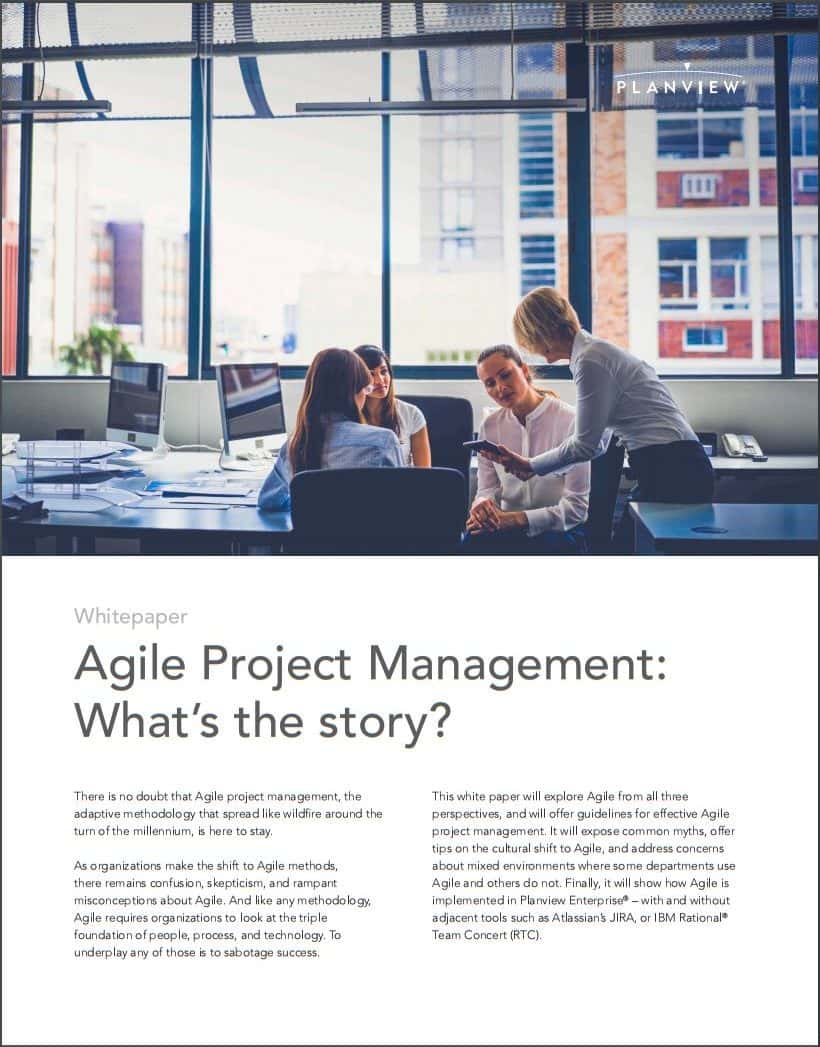
In part one of my two-part blog series, I highlight 3 of the 7 reasons why Agile and PPM are not mutually exclusive. By using both Agile and Project Portfolio Management (PPM), you can make your business more nimble and competitive. With Agile, you can implement change quickly. With PPM, you can manage all types of work with an eye to your organization’s overarching strategic plans.
As mentioned in part one, Agile has its role in the PMO, helping to measure success and report back to the business. For example, it is great for projects with a fixed schedule and costs, allowing teams to deliver value more swiftly. But there are times when Agile is not the best approach, such as when formal specs are needed for auditability, safety, or preciseness, or when lots of approvals are needed by multiple parties.
Be sure to read over Part 1: Avoid the Methodology Trap, for more information on the first three reasons.
No doubt, when it comes to prioritizing projects, balancing demand, and optimizing resources, you need both Agile and PPM.
Here are the remaining reasons they are not mutually exclusive:
1. Balancing Forecasts and Actual Costs: Tasked with planning and managing costs and benefits, it is important to make sure that your plans align with financial process, including budgeting and forecasting. As a steward to the business, you need to understand both forecasted and actual costs across portfolios and organizations.
Connecting with PPM: Create better forecasts to enable better decision-making; understand true execution costs, the value provided, and the benefit received.
2. Plan in Months and Quarters: You need to think beyond weeks and sprints. Yes, epics and stories are great for accomplishing incremental change, but how will you manage large, cross-departmental efforts? Even worse – how can you balance dependencies across teams over even longer time frames? Quite frankly, most Agile tools are not well suited for this kind of long-term, coordinated effort.
Connecting with PPM: Develop long-term investment strategies that meet business objectives.
3. Manage All Types of Work: No doubt, JIRA is well suited to software development organizations. But it doesn’t necessarily translate to organizations outside software development. From a process and usability standpoint, using JIRA can be a struggle. On one hand, you want a tool that isn’t strictly Agile that can manage all types of work, but you also want something more intuitive for use cases.
Connecting with PPM: Scope, schedule, and execute work and manage projects effectively.
4. Measuring Success and Weighing Change: For starters, Agile tools are great for helping drive constant releases and changes to the customer. But supporting an enterprise means working towards a set of strategic priorities. You must also create or enhance assets that are designed to mature a particular set of business capabilities. When it comes to the changes made via Agile tools, how do you begin to measure their success post-delivery? What if you want to make changes and need to weigh the risks? It is critical to understand and manage the ecosystem of the organization to continually meet business demands and needs. As these changes become part of the business, determining when and how to make changes becomes more and more complex.
Connecting with PPM: Measure performance in meaningful business terms, and promote overall accountability.
For more information now, I invite you to read the whitepaper, Agile Project Management: What’s The Story, and comment below how you are using PPM and Agile in your organization.





